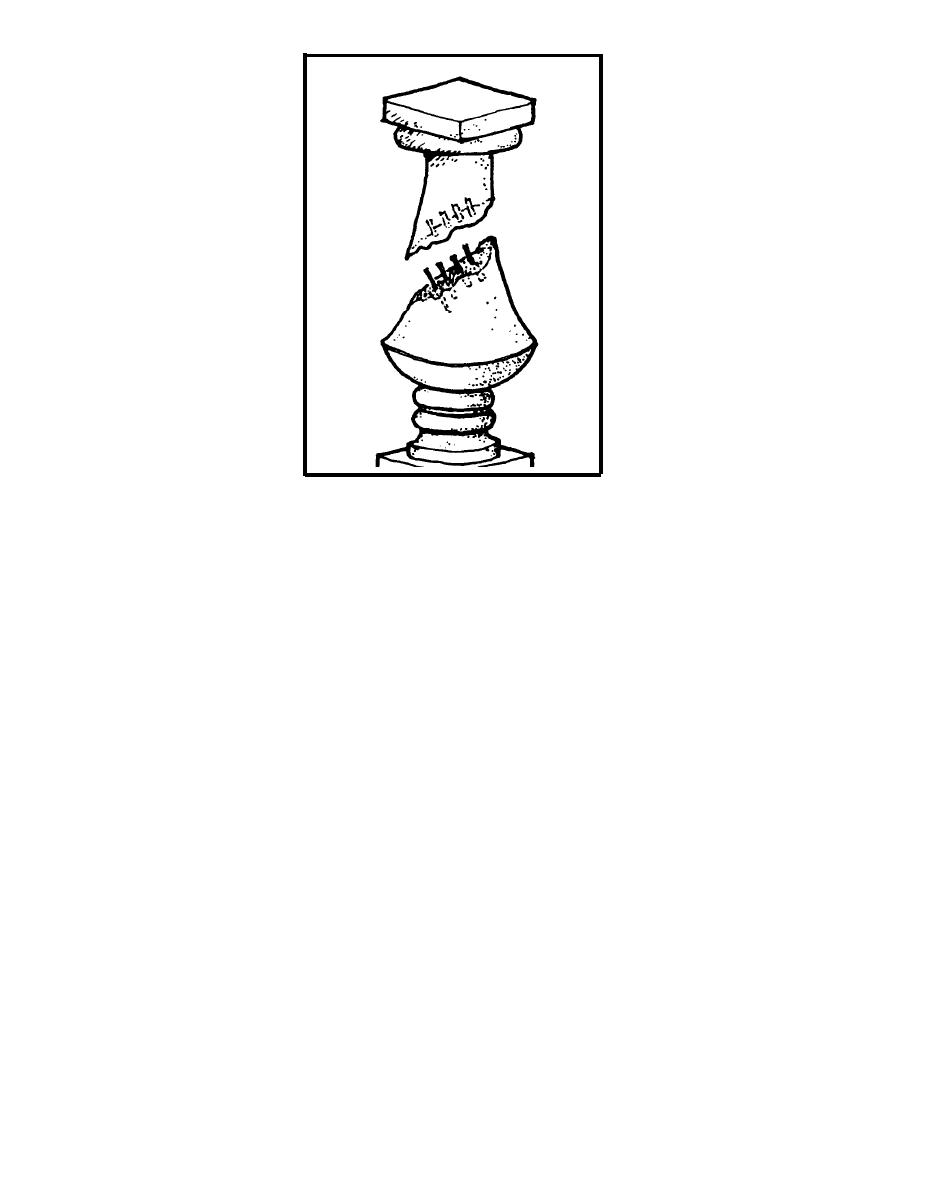

Custom Search
|
|

|
||
 Figure 4-4.
Blind Reattachment of Broken Stone.
(Source:
Dinu Bumbaru, Heritage Montreal Foundation)
from the captured water and crystallized salts pops the
face off the brick, creating an effect known as spalling.
Many old repainting jobs used portland cement, which may
now be impossible to remove without causing further damage
to the bricks around it.
In general, repainting should be avoided unless it is
clearly needed. Even when carefully done, it can damage
old masonry. When repainting is necessary, the damaged
mortar should be carefully raked out to a depth of about 1
inch, using only hand-held tools, such as chisels that are
fitted to the joint. If the mortar is very powdery, an
air jet or a gentle stream of water may be used to clean
it out. Power tools such as cutting wheels or pneumatic
chisels, should not be used on historic masonry, as it is
impossible to avoid damage to the historic fabric.
Replacement mortar should match the old as closely as
possible in composition and color.
(Be sure to match the
original mortar, not a later repainting job.) Use
hydrated lime and clean sand that matches the original as
closely as possible in color, type, and coarseness. To
see what kind of sand is needed, crush a sample of the
original mortar in water and let the sand settle out
4-6
|
 |
|
 |
||